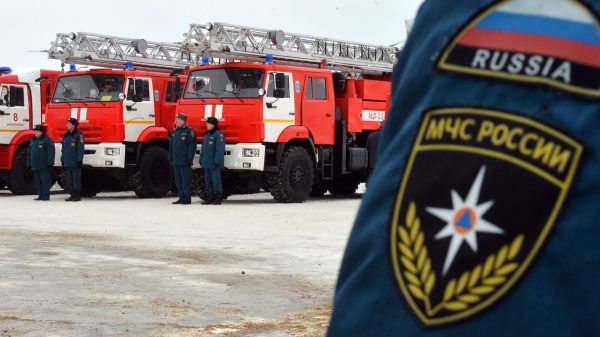More than 50 Australian coal ships are still stranded off China’s coast, held up by a Chinese government import ban, despite the country facing coal shortages and one of its worst power blackouts in years.
China has rejected suggestions its October ban on Australian coal has contributed to the coal shortage but the ban has been linked to higher domestic prices. Analysts have said that under the current circumstances any incoming coal would help.
Hundreds of millions of Chinese people have been ordered to severely ration electricity usage, including limiting factory operations, stopping elevators in high rise apartments, and banning the use of heaters until temperatures drop below 3C.
State media has reported buyers lining up outside coal yards to fill trucks, while rail companies have been ordered to prioritise coal transportation. Customs officials have lifted import quotas at some ports for coal from countries other than Australia. In November, Chinese authorities approved four new coal mines in western Xinjiang.
China formalises cut to Australian coal imports, state media reports
Read more
But according to data provided to the Guardian by the energy market intelligence firm, Kpler, ships carrying hundreds of millions of tonnes of Australian coal – some of it already paid for – remain stranded off the coast after the government suddenly banned imports in October amid a deepening trade dispute.
Kpler data identified 53 vessels that had been waiting offshore for more than four weeks, while all ships carrying coal from other countries, except one, had delivered their load and departed.
“In December, three Australian coal ships in the congestion list left for ports outside China,” said Kpler. “Two of them had been waiting since August and another one has waited since October.”
While congestion had improved in the past month, the average wait time for coal shipments before discharging is still around double that of the same period in both 2019 and 2018.
Graph showing coal ship wait times in China
In explaining the power cuts, authorities have pointed to increased industrial production post-pandemic, and lower than normal temperatures, noting that the south of the country doesn’t have the energy efficiency of central heating. China is also striving to meet energy reduction targets after leader Xi Jinping’s September pledge of carbon neutrality by 2060.
Electricity limits have been in place in the provinces of Zhejiang, Hunan and Jiangxi, and the autonomous region of inner Mongolia, since early December, as all three provinces saw increased year-on-year power consumption.
Until the end of the year, all street lights and billboards have been switched off in the Zhejiang province city of Yiwu. Companies in Yiwu, believed to be the world’s largest wholesaler market, are limited to later start times, local authorities said.
Yiwu businesses confirmed to the Guardian they were advising clients the power limits would cause delays.
China’s ban is less of a threat to Australia’s coal industry than international climate ambition | Tim Buckley
Read more
One Yiwu business said they hoped customers understood if orders arrived late. “Usually many items are packaged by machines, and now Yiwu has been constantly powering off,” it said. On WeChat, one factory partner told his wholesaler they had bought flashlights so they could keep working to dispatch orders.
The National Development and Reform Commission said there was no shortage of power supply in Zhejiang and that it could guarantee the province’s demands, but simultaneously said some places had adopted measures “in order to promote energy conservation and emission reduction”, Xinhua reported.
Local residents were sceptical of the apparent need to turn off street lights and factory power in order to achieve reduction targets. “It’s already been difficult to do business this year, now government indicators are overwhelming the common people,” said one resident on Weibo.
Additional reporting by Pei Lin Wu






















































Свежие комментарии